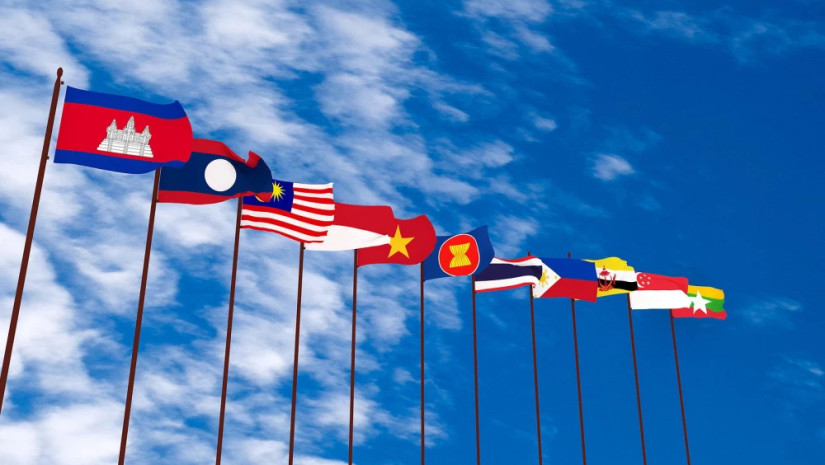Financial markets run on narratives. Invest IN ASEAN and overweight ASEAN stock markets is increasingly becoming “mainstream” among larger banks with marketing & distribution capabilities.
The Association of Southeast Asian Nations (ASEAN) is a fast growing economic and political union and trade bloc of 10 member states: Brunei, Cambodia, Indonesia, Lao PDR, Malaysia, Myanmar, the Philippines, Singapore, Thailand and Vietnam.
ASEAN’s market of more than 600 million people is 9% of the world’s total population. Combined income per capita in the region for the past 6 years has been rising and reached an average of US$3,600 as of 2011. Singapore has the highest GDP per capita at over US$50,000 followed by Brunei at US$39,000.
Varying economies, dynamic governments, diverse markets, colourful cultures. ASEAN presents opportunities in different sectors for small and large investors. Integrated and connected. As ASEAN economies further integrate, limitless opportunities are created, relations with global economies are strengthened, people and investors benefit. Proven resiliency.
Long ASEAN is becoming consensus smart money investors and family offices recall the profitable wall street adage just because it is consensus does not make it wrong.
In a world with rising geopolitical uncertainties, investors are looking towards larger economic blocs with good growth and attractive return potential.
ASEAN represents the world’s fourth largest market and hence merits investor interest.
Following the ASEAN Economic Community (AEC) blueprint, the capital market enhancement is one of the visions under the pillar of “Highly Integrated and Cohesive Economy” aiming to promote the ASEAN market as an asset class.
In global asset allocation decisions ASEAN is becoming more important. In the European union it was France and Germany as the key architects of the EU. In ASEAN it was the republic of Singapore and the kingdom of Thailand who shared the vision of a robust and successful ASEAN.
Japan ASEAN relationship is becoming important again or even more important. Despite the sad history of Imperial Japan’s occupation of some ASEAN countries during World War two.
Soon after ASEAN was established, Japan in 1973 became the first country in the world to start a serious dialogue with ASEAN countries.
Economic ties between Japan and ASEAN countries are growing stronger. The number of Japanese residents in ASEAN exceeds 200,000, and ASEAN is Japan's largest investment destination in East Asia. The number of visitors from Southeast Asia to Japan has also been increasing significantly year by year, reaching approximately 3.9 million in 2019 before the COVID-19 pandemic.
A distinctive feature of the ASEAN-Japan partnership is that it is a relationship based on mutual understanding and trust that has withstood the test of time, over many years.
Encouraged by the dramatic economic development of ASEAN countries, the region is now a strong locomotive of the global economy.
For the Indo-Pacific region to remain the "Epicentrum of growth," it is necessary to work toward the common goal of leading the world in cooperation, rather than division and confrontation. The key to advancing this goal is to uphold and reinforce the free and open international order based on the rule of law.
Japan has been a consistent supporter of ASEAN unity and centrality. The ASEAN Outlook on the Indo-Pacific (AOIP) shares the same fundamental principles as Japan's free and open Indo-Pacific, such as openness, transparency, inclusiveness and respect for international law.
In terms of asset allocation investors should decide whether a Pan ASEAN equity market fund approach similar to pan European fund or ETF approach or a single country focus is preferable.
The beauty of ASEAN investing is that included both large cap equity markets like Indonesia and sophisticated developed equity markets like the island state of singapore, next to more mature markets like the kingdom of Thailand and Vietnam and true frontier markets like the kingdom of Cambodia.
Cambodia became ASEAN’s tenth member in 1999. Cambodia under the Khmer rouge regime of Pol Pot as comrade number one, went into total isolation and was the only country in the world ever to try to completely abolish money. Today Cambodia has not only a money museum but also a growing and thriving capital market. The local currency KHR is fully and easily convertible into the USD and the country is still a largely dollarized economy firmly in the orbit of the People’s republic of China under the leadership of Xi Jing Ping. In public speeches Mr. Xi referred to Cambodia and China having a common shared future.
While Singapore might be the most well known and most developed asean private banking centre, its local stock markets has been out of favour as more and more global investors focus to move their money to better-performing markets in the Asia pacific region like South Korea and Taiwan thanks to an AI-driven revival in the chip sector. In the Kingdom of Thailand, Tourism-led retail sales growth and a projected increase in Thailand’s consumer spending are also seen improving the economic outlook.
Political uncertainty after Thailand’s recent general election—with the nation’s opposition parties gaining the most seats in the lower house of parliament—has caused Thai equities to stumble, putting its stock market among the worst-performing Asian exchanges so far this year. Thai voters and global investors are looking for a stable new government and clear economic policies, including debt-restructuring measures, for sustainable growth.
Rainer Michael Preiss is Partner & Portfolio Strategist at Das Family Office in Singapore.
















